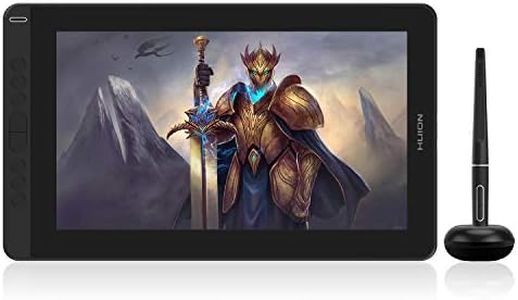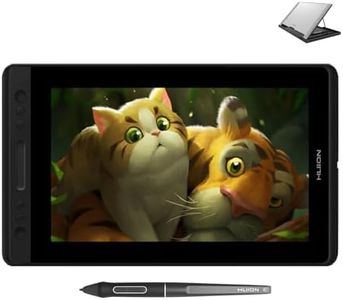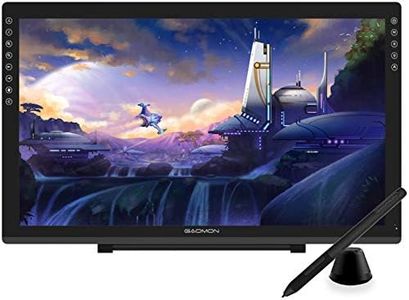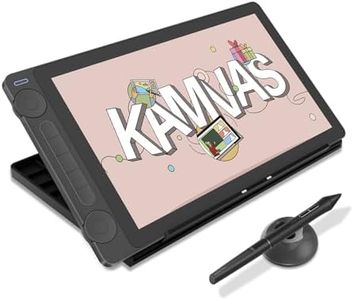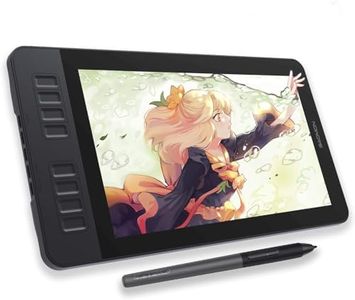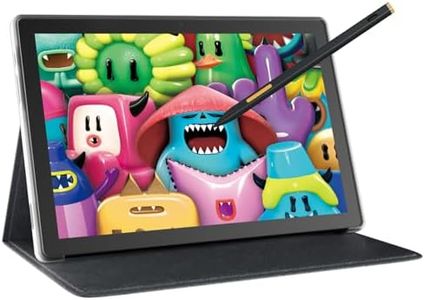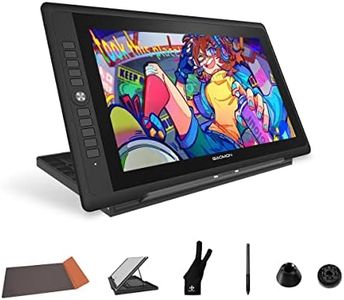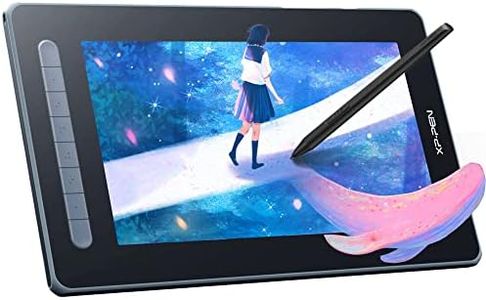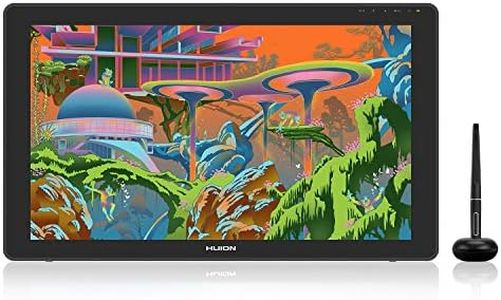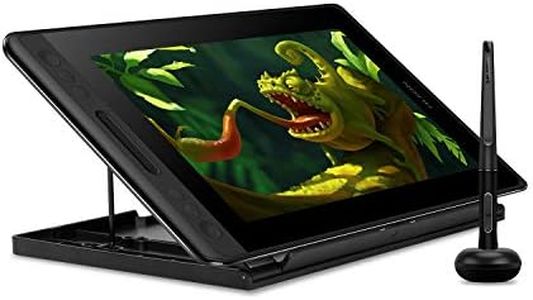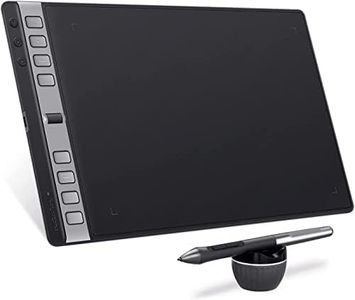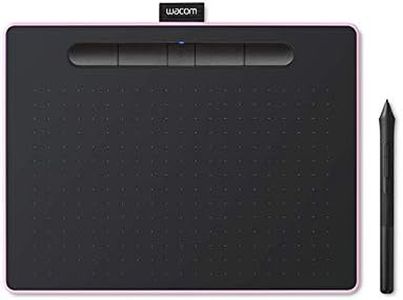We Use CookiesWe use cookies to enhance the security, performance,
functionality and for analytical and promotional activities. By continuing to browse this site you
are agreeing to our privacy policy
10 Best Drawing Tablets
From leading brands and best sellers available on the web.By clicking on a link to a third party's website, log data is shared with that third party.
Buying Guide for the Best Drawing Tablets
Choosing a drawing tablet can feel overwhelming with all the options out there, but the process becomes much easier when you focus on how you plan to use it. Think about whether you want to create digital art as a hobby, for professional work, or just for casual doodling. Also, take into account how portable you want your tablet to be and the software you plan on using. By narrowing down your needs and comparing the most important specifications, you'll be able to find a tablet that enhances your creative process and feels comfortable to use.Screen SizeScreen size refers to the actual active drawing area of the tablet. This is important because it affects how much room you have to draw. Smaller screens (around 6-10 inches) are portable and easy to handle, making them good for on-the-go sketches or if you have limited desk space. Medium screens (11-16 inches) strike a balance between portability and enough working area to draw comfortably for long sessions. Large screens (17 inches and above) feel more like drawing on paper or a canvas, which can be great for detailed and expansive artwork but can also take up a lot of space and may not be as portable. When deciding, consider where you'll use the tablet and whether you prefer more room to draw or more portability.
Pressure SensitivityPressure sensitivity measures how well the tablet can detect different levels of pressure from the stylus. Higher sensitivity, shown by higher numbers like 2048 or 8192 levels, allows for more precise control over line thickness and opacity, which is important for creating detailed, expressive art. Lower values are generally sufficient for casual sketches, but if you want more control and natural results, especially for professional work, go for higher sensitivity. Your choice depends on your art style—delicate shading and varied line work benefit from higher sensitivity, while simple coloring and notes are fine with fewer levels.
Pen TypeThe type of pen the tablet uses affects how natural and comfortable drawing feels. Some pens require batteries or charging, while others are battery-free and use EMR (electromagnetic resonance) technology. Battery-free pens are lighter and easier to handle for long drawing sessions. Consider also the presence of tilt recognition, which captures the angle of your strokes and helps with shading. If you prefer a natural, pencil-like feel and plan to work for long hours, a battery-free stylus with tilt recognition is often the best choice.
Resolution (LPI or Pixels)Resolution measures how many lines per inch (LPI) the tablet can capture or, for screen tablets, how many pixels are displayed. Higher resolution means more detail, resulting in smoother, more accurate lines. Tablets with higher LPI or pixel counts are great for intricate work or professional illustration. For casual drawing or note-taking, lower resolution is typically sufficient. If your art involves detailed line work or high-quality digital paintings, look for higher resolution values.
ConnectivityConnectivity refers to how the tablet connects to your computer or device. Some tablets use USB cables, while others offer wireless options like Bluetooth. There are also standalone tablets that don't need to be connected at all. Wired connections tend to be more reliable and have less lag, making them good for long drawing sessions at a desk. Wireless and standalone options are great for mobility and working in different locations. Think about where and how you'll use your tablet, and pick the option that matches your workflow.
CompatibilityCompatibility is about which operating systems (Windows, Mac, Android, iOS) and software your tablet supports. Some tablets are designed for specific systems or come with apps that work best with certain devices. Make sure the tablet you choose is fully compatible with your main devices and preferred drawing programs. If you have a specific software in mind, such as Photoshop or Procreate, check that the tablet works well with it.
Type: Display vs. Non-DisplayDrawing tablets come in display and non-display (graphics tablet) varieties. Display tablets have a built-in screen you draw directly on, which feels more natural for many artists and reduces hand-eye coordination issues. Non-display tablets connect to a computer, and you look at the monitor while drawing on the tablet’s surface. Display tablets are easier for beginners and those wanting an intuitive experience, while non-display tablets are generally more affordable and lightweight, suitable for those comfortable with indirect drawing. Your choice depends on your comfort level and how closely you want the digital experience to mimic traditional drawing.

